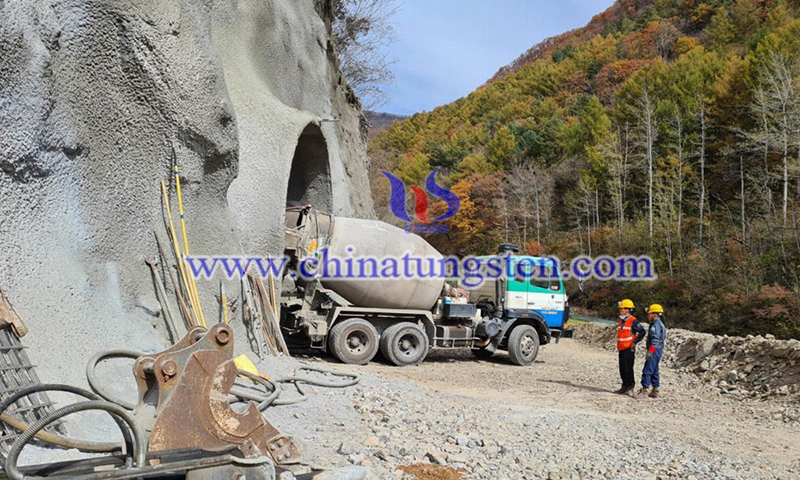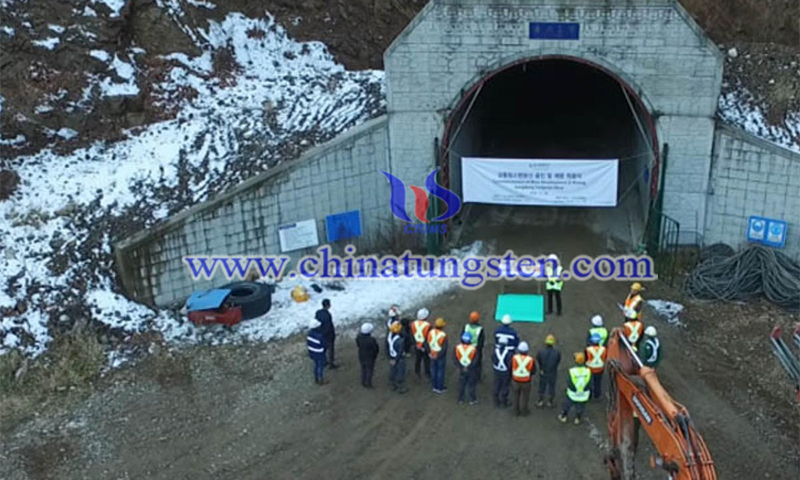Reigniting Future of Korea's $1 Billion Sangdong Tungsten Mine
- Details
- Category: Tungsten's News
- Published on Wednesday, 04 May 2022 11:02
Tungsten (W) has played an important role in the development of the modern industrialized world, but it is also a mineral with an unstable supply chain, which makes the future of the $1 billion Sangdong tungsten mine in South Korea shine. w is a shiny, black metal containing small amounts of carbon and oxygen that is essential for making battery anodes for electric vehicles, semiconductors and other green technologies.
Because tungsten has the highest melting point of any metal and is useful in strengthening alloys, it became a strategic metal during World War II and continues to be an important raw material for the munitions industry. Another useful feature of tungsten is that it does not decompose, making it one of the "greenest" raw metals.

According to the British Geological Survey, global demand for tungsten is expected to grow at a rate of 3 to 7 percent per year, and calls for new sources of strategic minerals such as tungsten are increasing as supply chain vulnerabilities continue to come to light in times of regional instability.
China dominates the market with 87% of the world's total rare earth production. Trade relations between China and the rest of the world also play a role in China's continued dominance, and domestic policy changes have sometimes shifted the supply and demand balance, with broad implications.
For South Korea, the Sangdong tungsten mine represented an emerging economic reality of global demand for domestic products, with the mine contributing over 50% of South Korea's export earnings. annual production of tungsten concentrate at Sangdong ranged from 994 metric tons in 1955 to 3,268 metric tons in 1961, with total production from 1952 to 1987 reaching 74,911 metric tons The total production from 1952 to 1987 was 74,911 metric tons.
The economic development program that gave Sangdong its international reputation in the 1990s also led to its demise. The government committed to a focus on technology and electronics, a late-stage capitalist push to replicate Japan's success in the same industries.
The price of tungsten fell in the mid-1980s, forcing the mine to reduce production and eventually close in 1992, when it went into hibernation down the mountain as residents slowly moved out and moved on. Those who remained watched as the mine was traded between mergers and acquisitions and the land was stored away until the next deal.

In 2006, a subsidiary of Almonty Industries, AII, acquired ownership of the Sangdong land. Sangdong still has the potential to produce 50% of the world's tungsten supply, providing a viable and secure supply outside of China's dominant exports.
With over 125 years of proven experience in projects in Spain and Portugal, Almonty is a company with the essential mining technology needed to produce tungsten; technology that is hard to come by today and is the key to reviving the sleeping giant beneath Sangdong. With Almonty at the helm, Korea’s Sangdong Tungsten Mine could be taken to new heights and Almonty Industries' stock remains steady at $1.00 per share.
- Tungsten Manufacturer & Supplier, Chinatungsten Online: www.chinatungsten.com
- Tungsten News & Prices of China Tungsten Industry Association: www.ctia.com.cn
- Molybdenum News & Price: news.molybdenum.com.cn
- Tel.: 86 592 5129696; Fax: 86 592 5129797; Email: sales@chinatungsten.com



 sales@chinatungsten.com
sales@chinatungsten.com